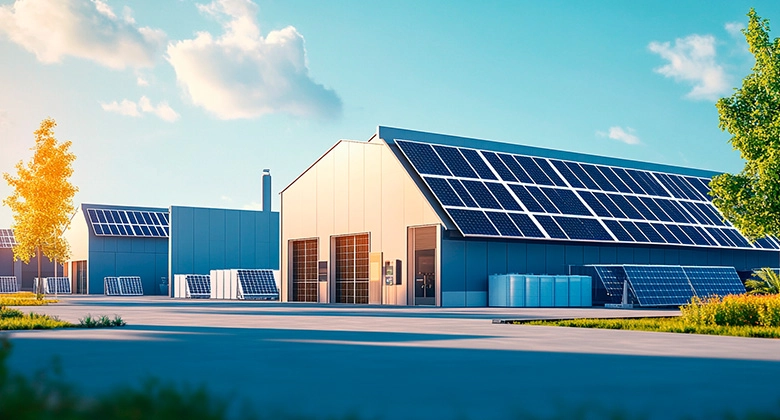

Why internal monitoring is now a strategic necessity
In the past, energy monitoring within solar power systems was often treated as an optional add-on. Today, amid rising energy volatility and digital transformation, it's become a core pillar of operational control. Especially in Ukraine, where energy independence is now a strategic goal for businesses, internal monitoring of both generation and consumption allows companies to manage costs, minimize losses, and prepare for scaling.
At its core, internal monitoring provides real-time insights into how solar energy is being produced and used across the facility. This clarity supports not just performance optimization but strategic planning, regulatory compliance, and smart expansion. Businesses that aim to integrate solar power station solutions must view monitoring as essential infrastructure - not an afterthought.
Components of an internal monitoring setup
For effective deployment, the internal monitoring system should include:
- Smart meters on key distribution points
- Sensors for environmental parameters (irradiance, temperature)
- Inverter telemetry and string-level monitoring
- Real-time dashboards and alerting systems
- Historical analytics and forecasting tools
These tools help companies detect anomalies, benchmark performance, and take data-driven decisions. A well-integrated monitoring system enables energy managers to answer key questions instantly: Are we underproducing? Is consumption spiking without cause? Are all inverters running at optimal levels?
International case studies confirm the impact. For example, manufacturing hubs in Poland that introduced granular consumption monitoring reported an average 12% reduction in internal losses over 18 months. The Ukrainian market is rapidly adopting similar tools.
Aligning monitoring with system scale and inverter infrastructure
The larger and more complex the solar installation, the more critical internal visibility becomes. In mid-sized plants (100-500 kW), even minor misalignments between generation and usage can lead to substantial energy waste or grid penalties.
For instance, a facility running a 200 kW turnkey solar power station should monitor consumption in dynamic zones - such as production vs. HVAC - to avoid overloading or underusing parts of the system. Here, single-line schematics and inverter-level telemetry are not just helpful - they’re foundational to ROI.
The inverter’s role is also central. Systems using three-phase inverters benefit from more symmetrical load balancing, but this advantage is lost without proper monitoring. Conversely, hybrid configurations using batteries for solar power stations require consistent charge-discharge data to extend lifecycle and avoid degradation.
Common errors in monitoring implementation - and how to avoid them
Many businesses implement monitoring reactively or only partially. The result is an incomplete picture and delayed reaction to system faults. Common pitfalls include:
- Failing to integrate inverter data into central dashboards
- Ignoring environmental sensors - solar output is never static
- Lack of historical analytics to detect seasonal or behavioral trends
- Absence of automated alerts for abnormal fluctuations
- Poor differentiation between productive and non-productive loads
To address this, it's essential to involve energy specialists during the design phase and choose platforms that offer modular growth as energy needs evolve.
Business value unlocked through internal monitoring
When properly deployed, internal monitoring creates long-term value in three strategic areas:
- Operational efficiency: Early detection of energy waste or faulty modules
- Financial control: Better forecasting, budgeting, and tariff negotiation
- Sustainability metrics: Clearer reporting for ESG compliance and certification
For a logistics firm deploying a 500 kW turnkey solar power station, for example, integrating real-time consumption data with ERP systems enables automated cost allocation across departments or warehouse zones - a game-changer in financial reporting.
Moreover, companies planning future capacity upgrades can use historical performance data to justify scaling up or integrating storage.

